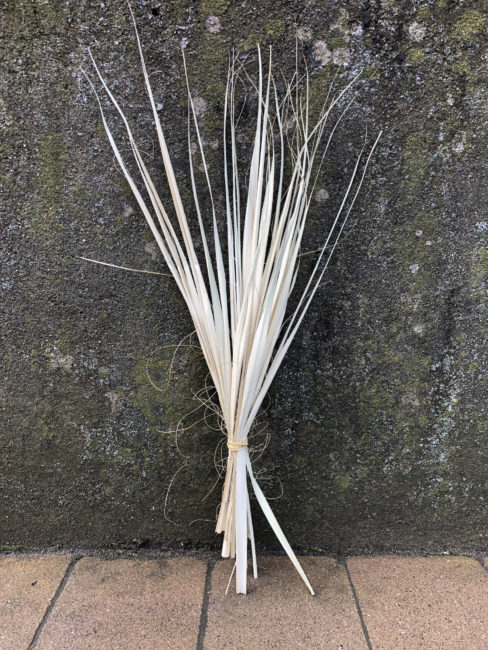This Sunday after church, we’ll carry out two of my favorite pre-Lenten traditions: burying our Alleluias and burning palms to make ashes for Ash Wednesday. Neither is strictly necessary, or even officially recommended. But both are very fun.
You probably know that we banish the word “Alleluia” (or its older Hebrew form, “Hallelujah!”) from our liturgy and music during the season of Lent. The word simply means, “Praise the Lord!” and we do, indeed, continue praising God during Lent. The omission of the word “Alleluia” marks Lent as a more somber and reflective season, one in which the focus shifts slightly toward mourning our imperfections rather than praising God’s glory. And indeed, it’s balanced during the season of Easter with extra Alleluias, not only in our hymns but in the liturgy itself, with extra Alleluias added to the dismissal at the end of every service.
It’s sad to see our Alleluias go. As one medieval bishop wrote, “We part from the ‘Alleluia’ as from a beloved friend.” So, since the medieval period, people have said “goodbye” to “Alleluia” in a variety of ways. This year, as we did last year, our children will decorate Alleluia banners, which we’ll bless and then carry in procession to be buried in the garden (or in a snowbank, as the case may be…) On Palm Sunday, we’ll “resurrect” our Alleluias again, transforming them into something new with which to celebrate Easter.

The ashes with which we mark Ash Wednesday, too, are the result of a transformation. The ashes are made from burned palm branches, mixed with holy oil. As with most things in church tradition, this has a practical and a symbolic purpose. The holy oil is the same holy oil used in baptism. In baptism, it symbolizes the seal of the Holy Spirit, anointing the newly-baptized as a joint-heir with Christ, the Anointed One. So on Ash Wednesday, the mixture of ashes and oil symbolizes our state as human beings: physical and yet spiritual; mortal and yet promised immortality; creatures dust, who will return to dust, and yet the holy and anointed ones of God. And, on a practical level, a little oil helps the ashes stick to your face.
The ashes could be any ashes. On the practical level, burning last year’s palms is just a way to save some money and, hey, dried-up old palm leaves will burn better than fresh ones. But for the ashes to be the burned remains of last year’s palms also creates a set of powerful symbolic links. We waved these branches last year while singing “All glory, laud, and honor to thee, Redeemer, King!” and greeting our Messiah with cries of “Hosanna! Blessed is He who comes in the name of the Lord!” They symbolize the hopes we have for deliverance; the hopes our spiritual ancestors had for independence, two thousand years ago.
And now, another year has passed. Our hopes and dreams for earthly salvation, for a king who’d ride into our city and fix our world, have not come true quite yet. The palm branches of our hoped-for royal procession have become the ashes of our own mortality.
It’s an ambivalent scene: festive and solemn, disappointing and fun. But I can’t help but notice that the bowl in which we’ll burn our hopes into ashes is the one in which we’ll light the New Fire at our Easter Vigil: that the oil with which we hoped to anoint a Savior now anoints our foreheads, too.
And the cycle of tradition continues: from the Alleluia-less Lent to the double-Alleluia Easter and back again; from palms to ashes, from dust to dust, from fire to fire again and again and again, reenacting the mystery of our salvation in every season of our lives.
